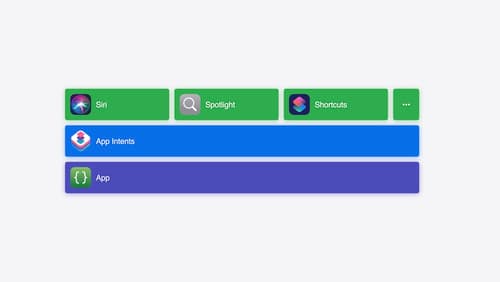What is the difference between StaticConfiguration and AppIntentConfiguration?
Asked on 2024-09-23
1 search
The difference between StaticConfiguration and AppIntentConfiguration lies in their use cases and flexibility within the app development process.
-
StaticConfiguration: This is typically used for defining configurations that do not change dynamically. It is often used in contexts where the configuration is set once and does not need to be altered based on user interaction or other dynamic factors.
-
AppIntentConfiguration: This is more dynamic and is used in scenarios where the configuration needs to be flexible and adaptable. It allows for the integration of app intents, which are designed to handle core actions and content that can be presented by system features like Siri and Spotlight. This configuration is particularly useful for creating interactive and configurable controls or widgets that can respond to user inputs or other dynamic conditions.
In the context of WWDC 2024, the session "Bring your app’s core features to users with App Intents" discusses how app intents can be used to define core actions and content, making them adaptable across various system features. This flexibility is a key aspect of AppIntentConfiguration, allowing developers to create more interactive and user-responsive applications.

Design App Intents for system experiences
App Intents power system experiences in controls, Spotlight, Siri, and more. Find out how to identify the functionality that’s best for App Intents, and how to use parameters to make these intents flexible. Learn how to use App Intents to allow people to take action outside your app, and see examples of when to navigate into your app to show contextual information.

Bring your app’s core features to users with App Intents
Learn the principles of the App Intents framework, like intents, entities, and queries, and how you can harness them to expose your app’s most important functionality right where people need it most. Find out how to build deep integration between your app and the many system features built on top of App Intents, including Siri, controls and widgets, Apple Pencil, Shortcuts, the Action button, and more. Get tips on how to build your App Intents integrations efficiently to create the best experiences in every surface while still sharing code and core functionality.
